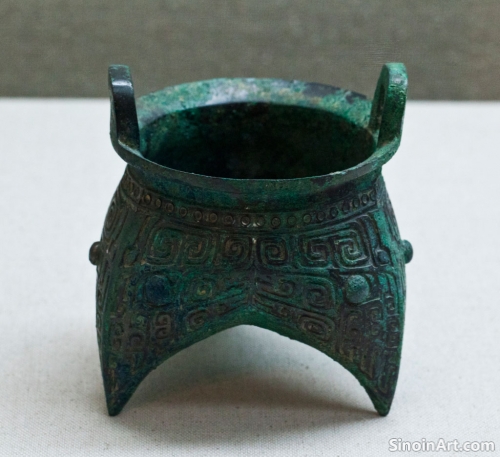The Future of Bronze Ware Studies: New Research Methods and Technologies
|
The field of Chinese bronze ware studies is a dynamic one, constantly evolving thanks to the application of new research methods and technologies. These new tools are helping to unlock more details about the creation, use, and history of these artifacts. New methods of research are helping to reshape the study of ancient Chinese art and culture.  The use of advanced imaging techniques, such as X-ray fluorescence (XRF) and computed tomography (CT) scans, allows for the analysis of bronze objects in greater detail, revealing information about their composition, casting methods, and surface decorations. The use of digital tools for imaging and analysis allows for a more complete and thorough approach to artifact analysis. The increased detail helps to enhance our understanding of the materials and processes used.  3D modeling and printing technologies are also being used to create virtual reconstructions of bronze objects, and to explore their original forms and functions. The use of these technologies allows for new ways to engage with the forms and functions of these ancient artifacts.  The use of isotopic analysis and other scientific techniques helps to further refine the dating of bronze objects and identify the source of the materials used in their creation, further enhancing our understanding of trade and cultural exchange. The careful dating and analysis of the material composition of the artifacts helps to create a fuller picture of their history and provenance. The application of new interdisciplinary approaches, combining archaeology, art history, and materials science, is further enriching the study of Chinese bronze ware, allowing for new interpretations and insights into these remarkable objects. The combination of different areas of study allows for a deeper and more thorough understanding of the art form. The interplay between the arts and sciences is helping to reveal more about the culture of ancient China. |
Tag : bronze research methods, archaeological science, artifact analysis, digital modeling, scientific techniques
Related information
- Bronze Ware and the Development of Ancient Chinese Cartography: Maps and Measurement
- The Use of Bronze in Ancient Chinese Maritime Activities: Navigation, Trade, and Exploration
- The Influence of Nomadic Cultures on Chinese Bronze Ware: Cross-Cultural Exchanges
- The Taotie Motif: Unraveling the Mystery of the Shang Bronze Beast
- The Impact of Bronze Ware on Ancient Chinese Ritual Practices: Sacrifices, Offerings, and Performances
This article explores the use of bronze in ancient Chinese cartography, highlighting its role in creating surveying tools, measuring instruments, and other devices used in mapmaking, and demonstrating its importance in facilitating the creation of accurate geographical records.
This article explores the use of bronze in ancient Chinese maritime activities, highlighting its role in creating ship fittings, navigational tools, and its impact on the development of trade routes and maritime exploration.
This article explores the influence of nomadic cultures on Chinese bronze ware, highlighting the adoption of new forms, styles, and techniques, the influence of animal motifs, and the role of trade and diplomacy in the transmission of cultural ideas.
This article explores the taotie motif found on Shang Dynasty bronzes, discussing its composite features, the various interpretations of its symbolic meaning, its evolution over time, and its significance in understanding the Shang worldview.
This article explores the impact of bronze ware on ancient Chinese ritual practices, highlighting their use in sacrifices, offerings, and performances, and demonstrating their importance in connecting the earthly world with the realms of gods and spirits.